Cecil was no ordinary lion. With his striking black mane and steady presence, he became a fixture in Zimbabwe’s Hwange National Park—admired by tourists, tracked by scientists, and quietly commanding attention wherever he went. But what began as a conservation success story would soon take a turn that no one expected, drawing the eyes of the world to one lion and the powerful questions his life—and death—would raise.
Where the Wild Still Rules
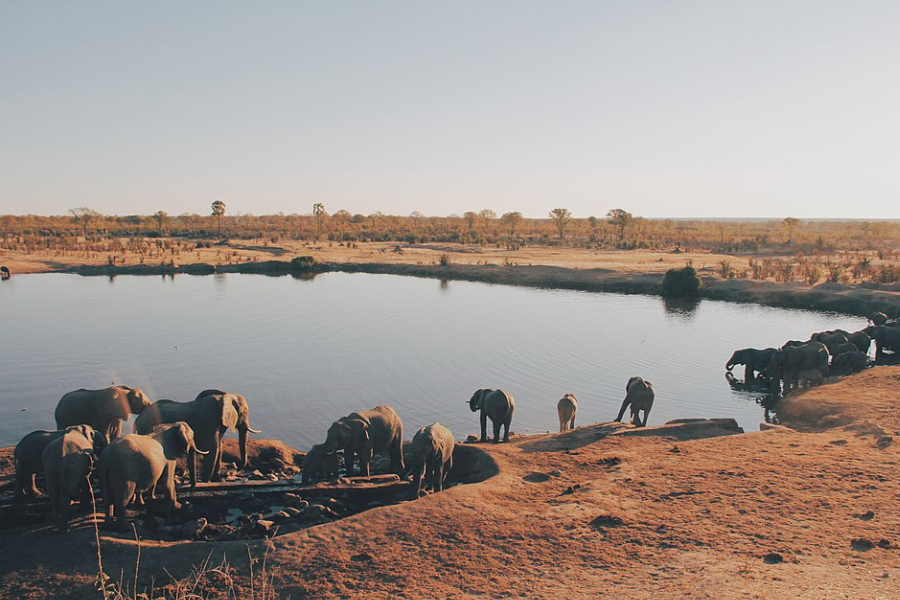
Nestled in western Zimbabwe, Hwange National Park has stood proudly since 1928 as the country’s largest game reserve, sprawling across over 14,600 square kilometers of raw wilderness.
This protected haven shelters elephants, giraffes, leopards, and over 400 bird species, all thriving under vast skies and ancient acacia trees far from human noise and concrete sprawl.
Tourists venture in for a glimpse of nature unfiltered, where dust dances in the sunlight and the wild still whispers its secrets—and it was here that Cecil walked like royalty.
A Lion’s Journey Begins
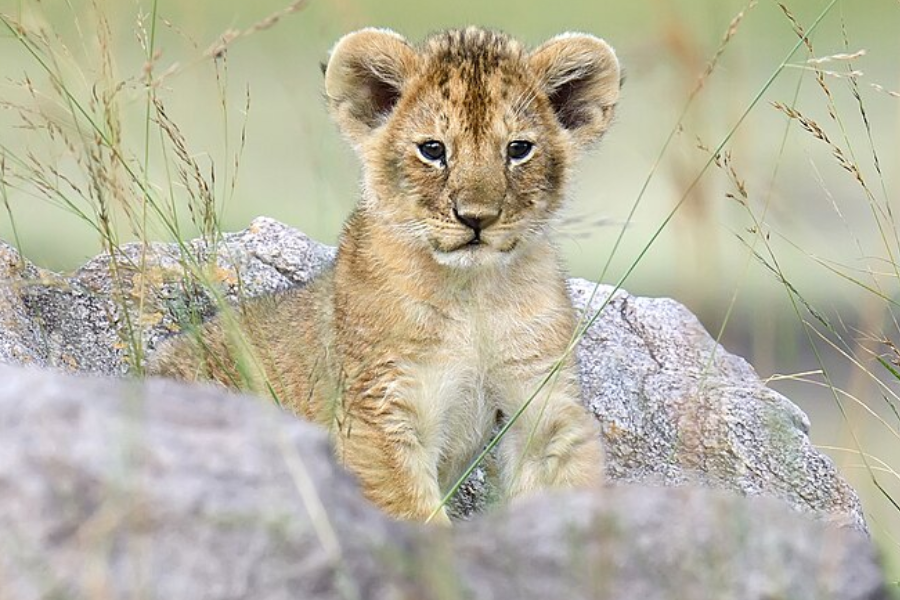
Cecil was born in 2002 in Zimbabwe’s Matusadona National Park, a remote region flanked by Lake Kariba, known for its rugged terrain and isolated lion populations.
In his early years, Cecil lived among a small pride, but by 2006 he had dispersed—like many maturing males—embarking on a solitary trek in search of territory.
By around 2008, he had reached Hwange National Park, where he began forming coalitions, challenging rivals, and slowly rising to prominence as one of the park’s most iconic lions.
The Lion with a Name
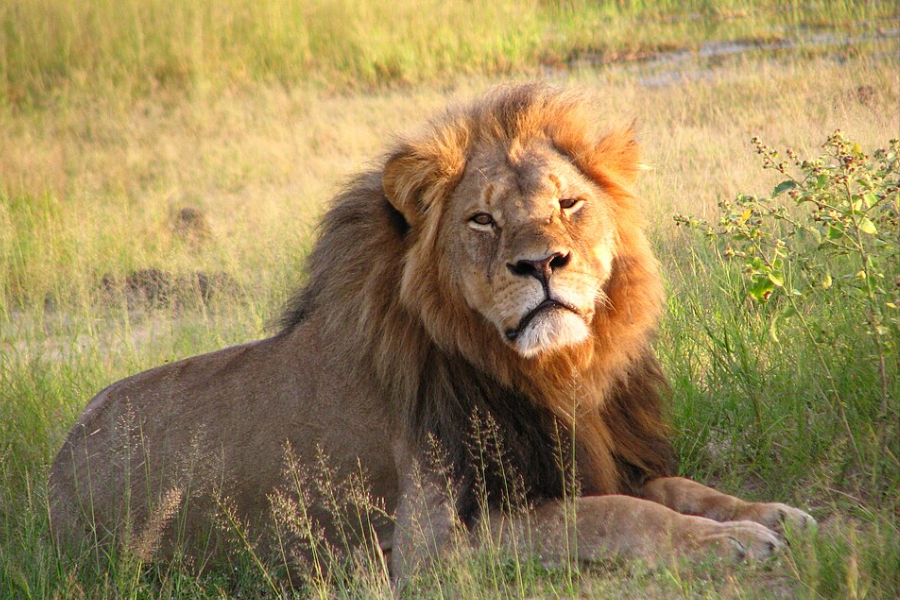
Soon after arriving in Hwange, Cecil became a part of a study conducted by Oxford’s WildCRU, chosen for his size, presence, and unusually calm, observant nature.
The research, led by Dr. David Macdonald, began in 1999 and tracked over 60 lions, using GPS collars to monitor movements, behavior, and interactions within and beyond park borders.
Cecil was collared in 2008, becoming one of the project’s most visible figures—his data helping scientists explore how lions navigate shrinking wilderness and growing human pressures.
Hwange’s Star
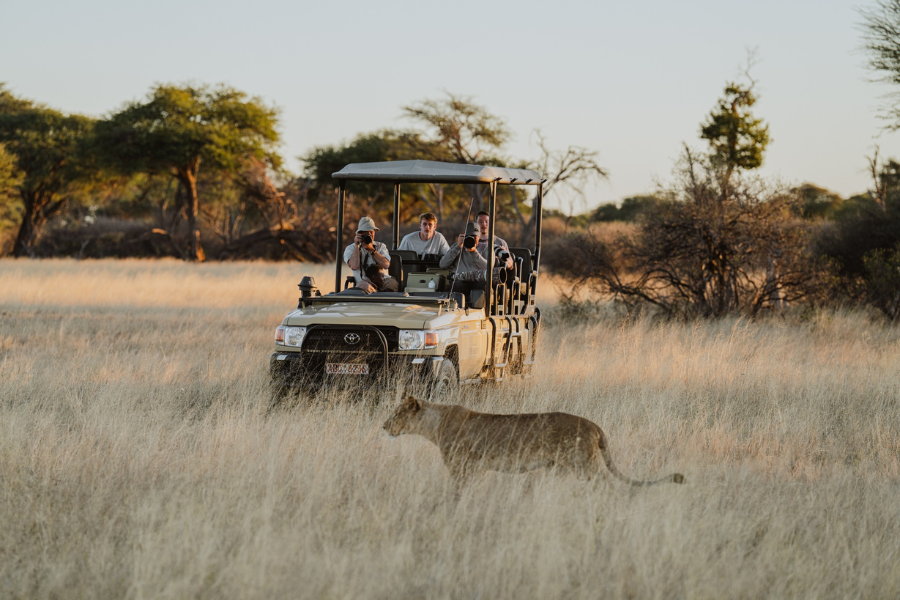
With his jet-black mane and telltale GPS collar, Cecil became Hwange’s crown jewel—graceful, photogenic, and oddly at ease around rumbling safari trucks.
He let vehicles get within ten meters, as if he’d read the brochure, posing perfectly while tourists gasped and cameras clicked like he was royalty on parade.
But while he drew admirers from around the world, back home,e most Zimbabweans had no idea he existed—a national treasure known everywhere but his own backyard.
The Fighter Behind the Fame
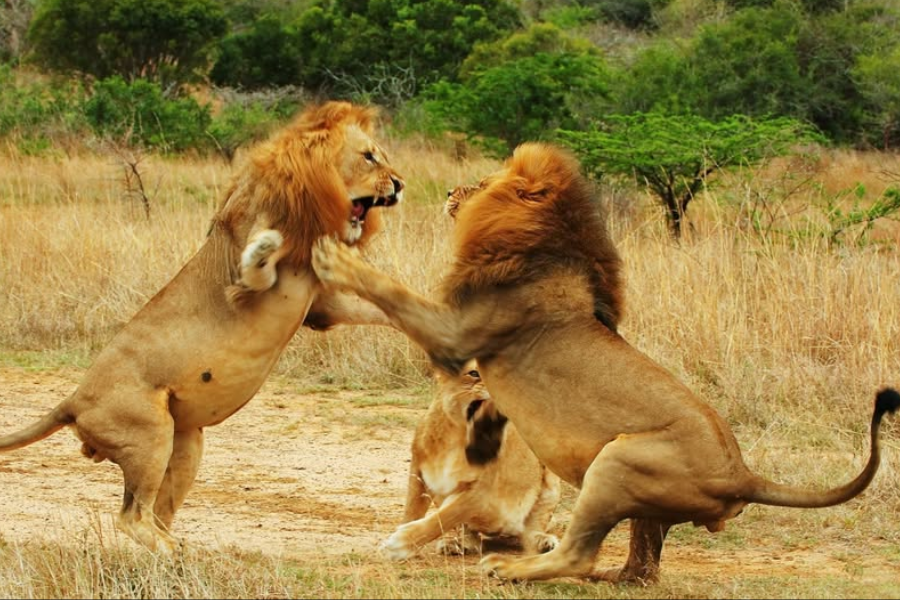
Cecil wasn’t just a gentle giant—he had claws and knew how to use them. In 2009, he and his brother challenged a rival pride.
The clash was brutal. Cecil’s brother didn’t survive, and both he and the reigning pride male were left badly injured in the aftermath of the fight.
Though wounded, Cecil held on. The former pride leader’s injuries were so severe that park rangers had to put him down—Cecil had won, but at a cost.
The Long Reign
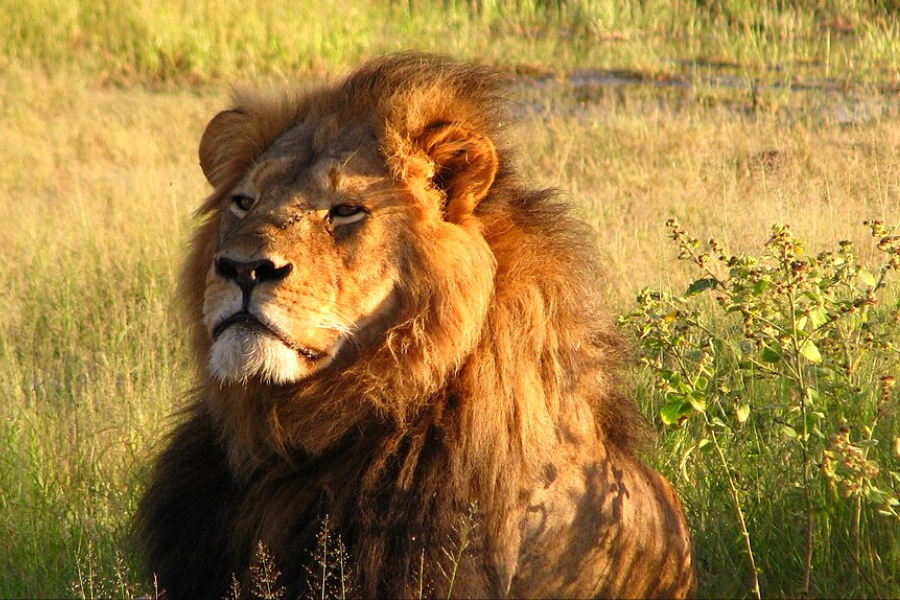
After the dust settled, Cecil claimed his own corner of Hwange, building a pride that at its peak included 22 lions—females, cubs, and his hard-earned legacy.
In 2013, two younger males muscled him out, forcing Cecil eastward. There, he formed a powerful alliance with another male, Jericho, and started anew.
Together, they ruled two prides, fathering cubs and defying the odds. Cecil was aging gracefully—well past a lion’s typical lifespan—when he tragically crossed paths with Walter Palmer.
The Hunter in the Shadows
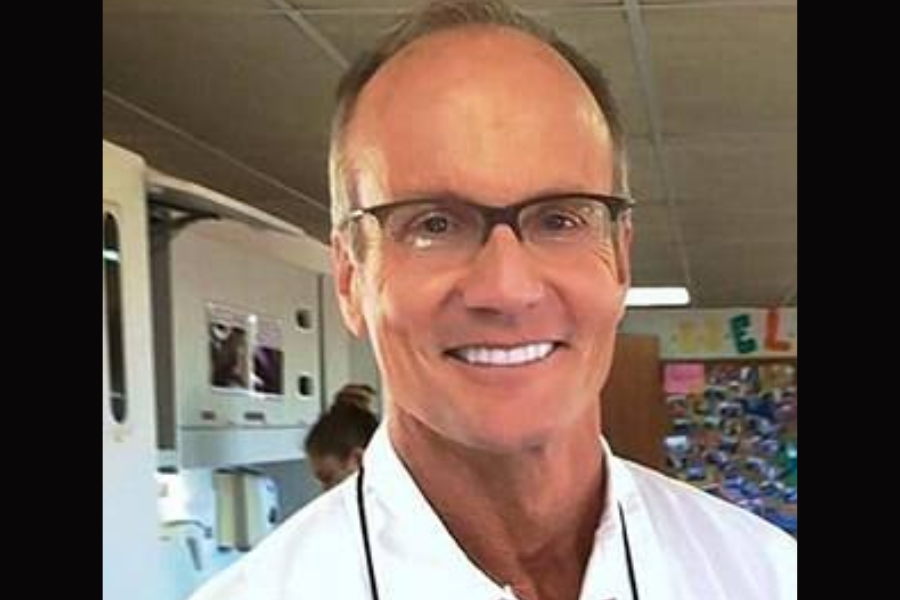
Walter Palmer, a dentist from Minnesota, was also an experienced trophy hunter with a long history of international big-game expeditions spanning several continents.
He had hunted polar bears in the Arctic, moose in North America, and leopards in Africa—often with a bow, and always with a photo to mark the kill.
In 2015, he traveled to Zimbabwe for another hunt, seeking the thrill of a lion kill—unaware that the events ahead would trigger global outrage.
The Baited Path
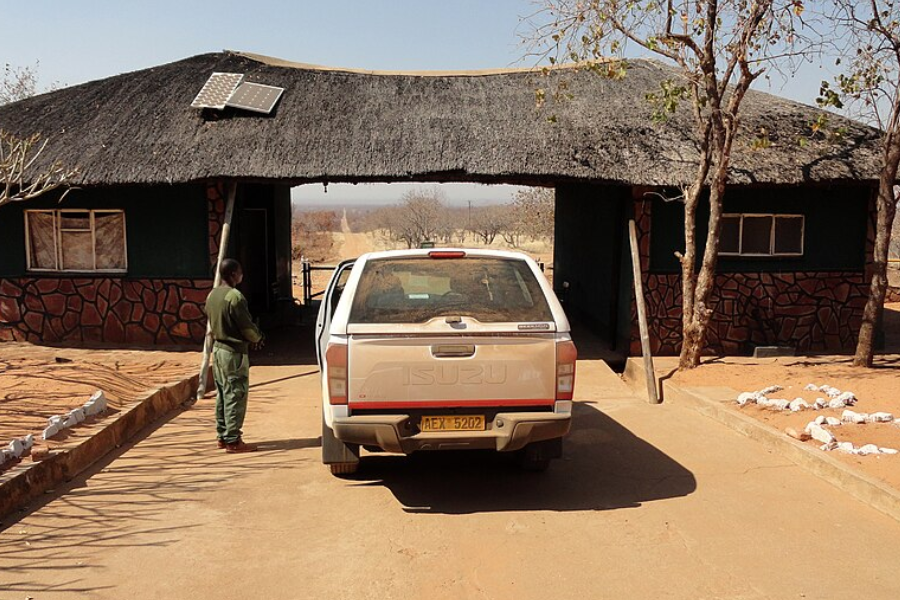
In June 2015, Walter Palmer reportedly paid $50,000 to professional hunter Theo Bronkhorst for a guided lion hunt near Hwange National Park.
On July 1st, Bronkhorst and tracker Cornelius Ncube prepared the site. They baited a carcass and built a hunting blind on Antoinette Farm, just outside the park’s boundary.
The land, owned by Honest Ndlovu, provided legal cover—but the methods used were anything but clear. As the sun set, they waited for a lion to cross the line.
The Night the Roar Fell Silent
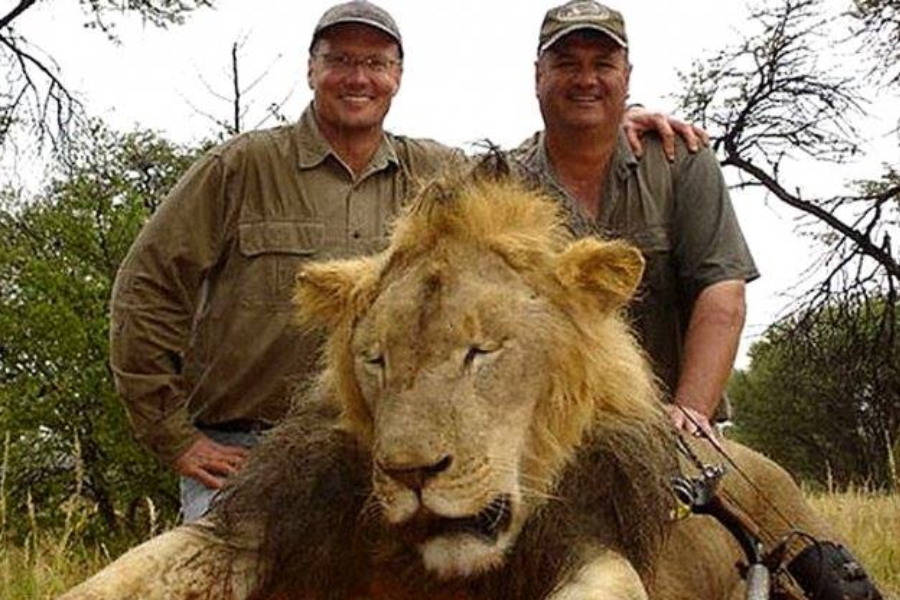
That tragic night, it was Cecil who followed the scent—drawn from the park by bait, unknowingly stepping into the crosshairs of a waiting hunter’s blind.
Between 9 and 11 p.m., Walter Palmer released the arrow. It struck Cecil, wounding him badly but not killing him. The lion vanished into the dark.
For over twelve hours, Cecil wandered in pain. By morning, the hunters closed in. A second arrow ended his life. He was 13—unusually old for a lion, and deserving of more.
Just Beyond the Line
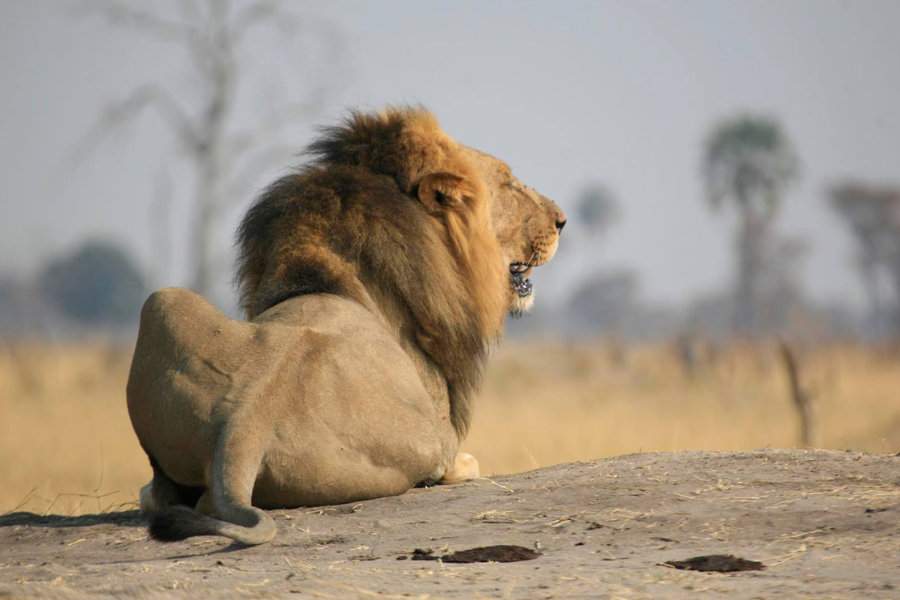
The hunt took place just outside Hwange National Park—only 820 feet from its boundary, yet still within the territory Cecil regularly patrolled as part of his range.
Palmer held a valid hunting license, but luring a lion from protected land cast a long ethical shadow over the legality of the kill.
Afterward, Cecil’s body was skinned, his head removed, and his tracking collar mysteriously disappeared. The act may have followed rules, but little about it felt right.
The Unseen Storm
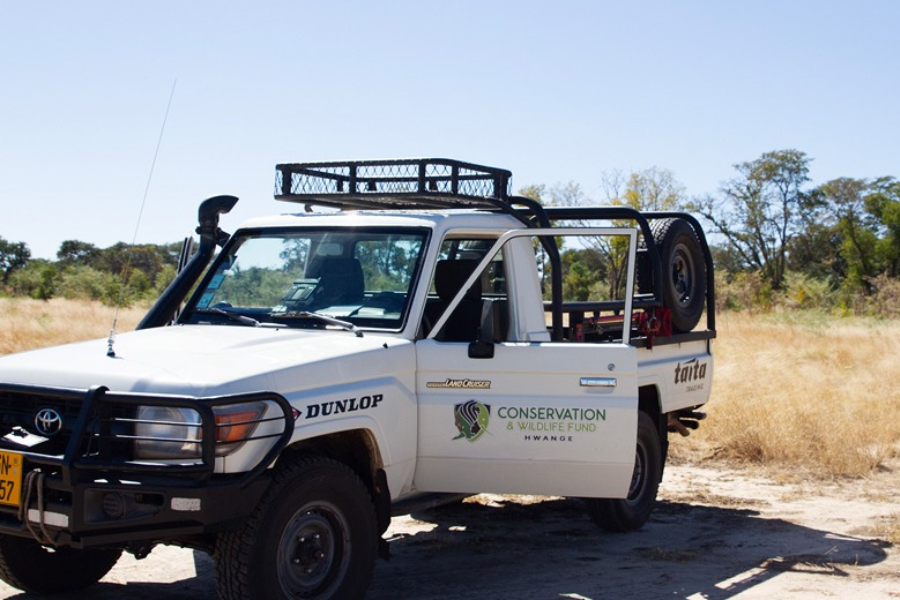
At the time of the hunt, Palmer and his guides had no idea who their target truly was—or the storm that would follow his death.
Back at Oxford, scientists from the Wildlife Conservation Research Unit noticed Cecil’s GPS collar had gone silent. When his headless body was found, the truth quickly surfaced.
They realized with horror that the lion they had tracked for years was gone. Palmer had no idea what he had unleashed—or how far the world would hear it.
The Trail That Told the Truth
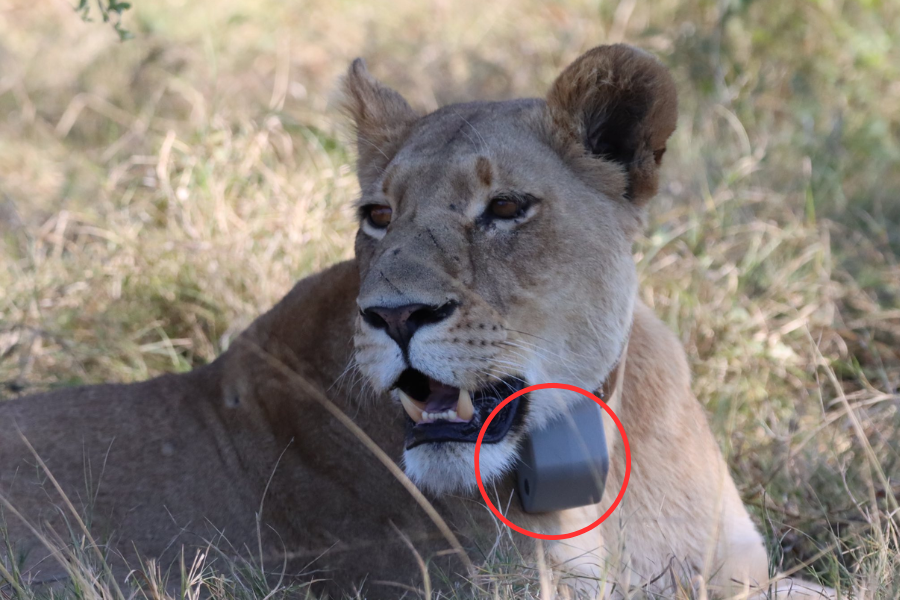
Cecil wore a satellite collar that recorded his location every two hours—his quiet journey mapped out in data points across the vast Hwange landscape.
When the signal stopped, researchers and officials retraced his final path. The coordinates led straight to Antoinette Farm, where bait had been set and a blind built.
Zimbabwe National Parks confirmed the findings. The GPS matched the investigation, linking the hunt to local guide Theo Bronkhorst, landowner Honest Ndlovu, and the man who pulled the bow—Walter Palmer.
The Investigation Begins
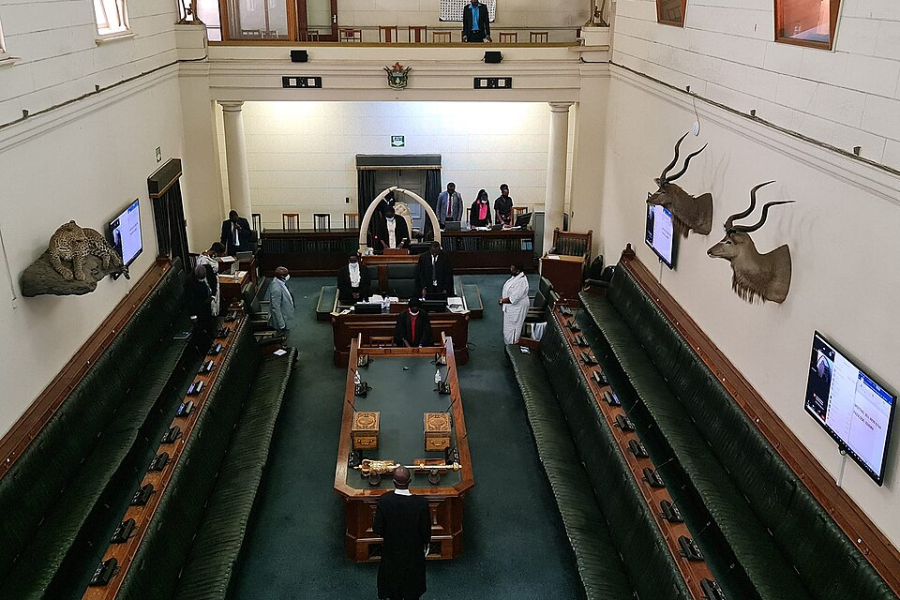
On 7 July 2015, Zimbabwe’s Parks and Wildlife Management Authority launched an official investigation into the illegal killing of a lion near Hwange National Park.
Authorities charged professional hunter Theo Bronkhorst with failing to prevent an illegal hunt, and landowner Honest Ndlovu with allowing an illegal hunt on his property.
Both faced accusations of violating national hunting regulations, specifically for using bait to lure a protected animal off park grounds. Immediately, the case stirred global outrage.
When the World Found Out
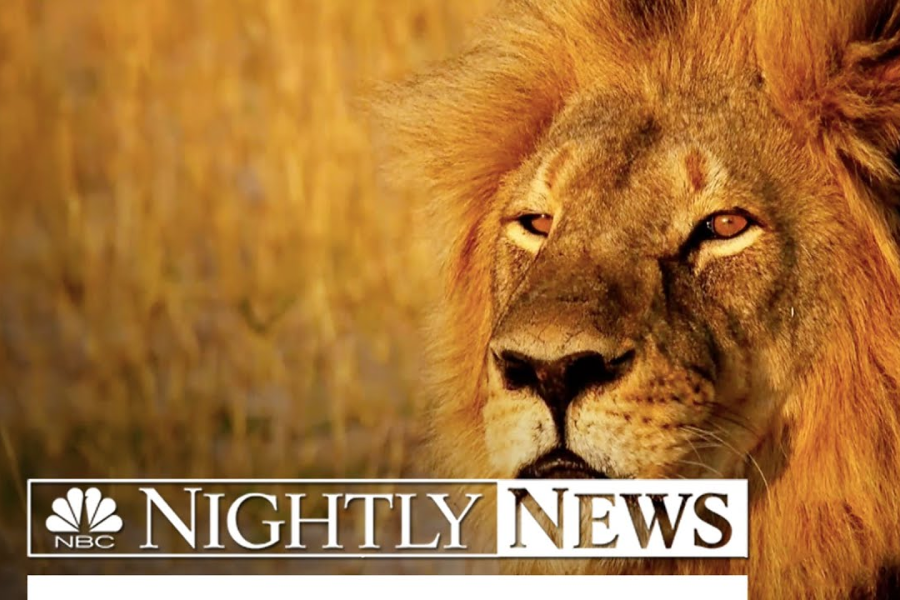
By the time the news broke worldwide, Walter Palmer was already back in the U.S.—his hunt complete, his bow packed, and Cecil’s head flown home as a trophy.
But this wasn’t just another quiet kill. The lion’s fame, the GPS data, and the immoral nature of the hunt sparked global outrage almost overnight.
Media outlets everywhere picked up the story. A firestorm ignited, and the world demanded answers for an act that felt unforgivably cruel.
Roars from the Conservation Front
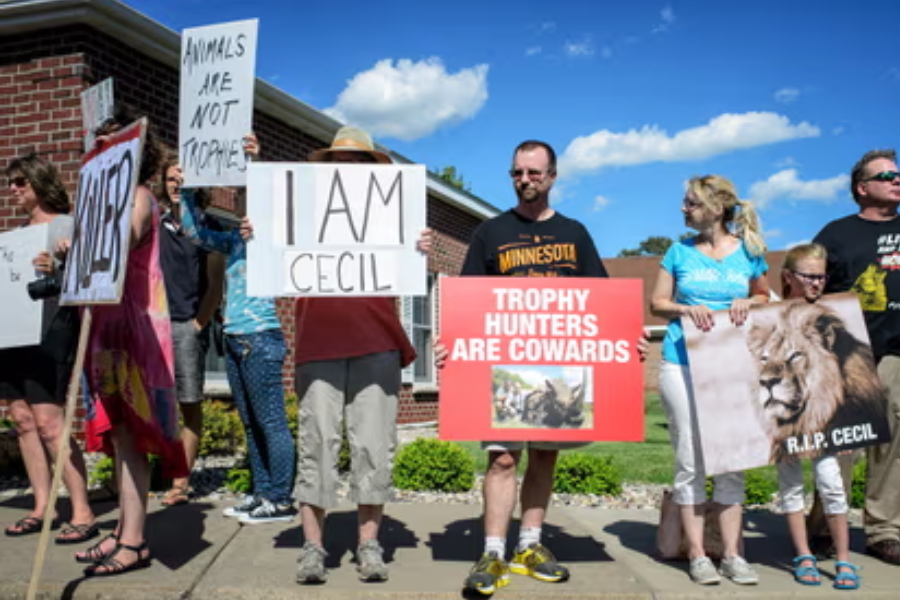
Wildlife and animal rights organizations responded with immediate and resounding outrage. To them, this was more than a lion—it was a symbol.
Groups like the World Wildlife Fund, Born Free Foundation, and PETA condemned the hunt, calling it unethical, exploitative, and a clear abuse of legal loopholes.
The moment sparked renewed calls for stricter trophy hunting regulations, bans on importing lion trophies, and broader protection for big cats across the African continent and beyond.
A Political Uproar
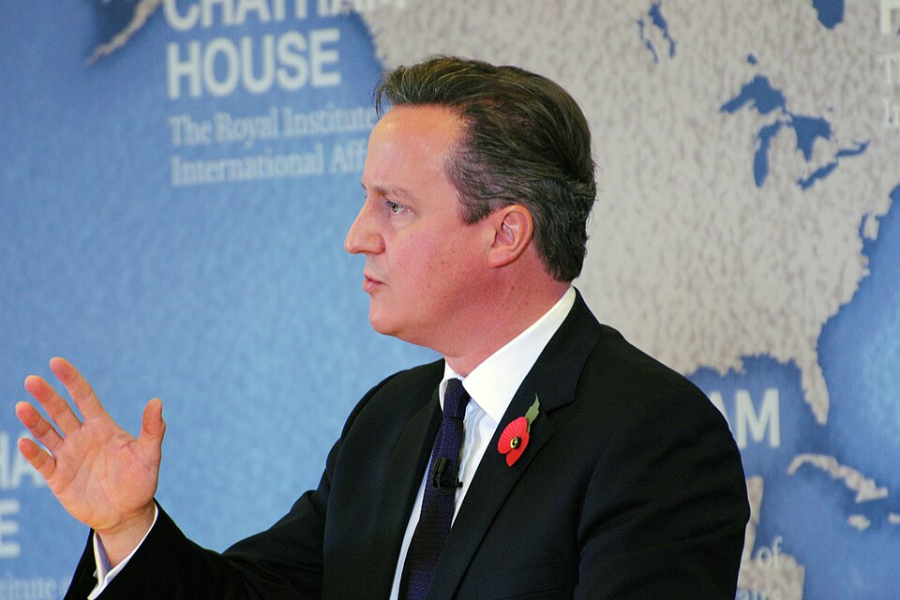
The outcry didn’t stop with activists—politicians around the world joined the chorus of condemnation, calling for accountability and urgent changes to trophy hunting laws.
U.S. Senator Robert Menendez proposed legislation to ban the import of lion trophies, while Congressman Raúl Grijalva publicly denounced the hunt as “cowardly and shameful.”
Even then-UK Prime Minister David Cameron and Germany’s environment minister Barbara Hendricks voiced their dismay. Cecil’s death had made its way into global politics—and it was impossible to ignore.
Remembered in Art and Action
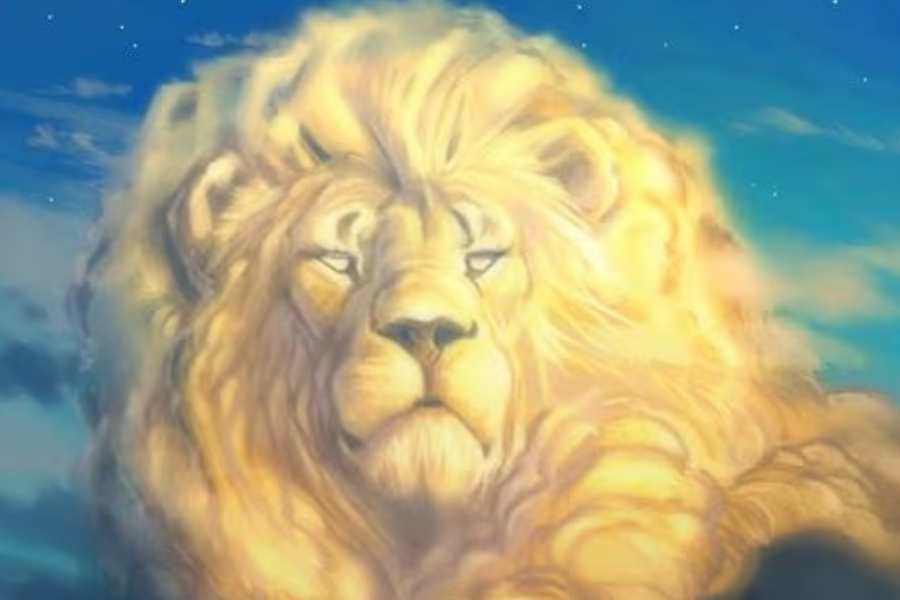
Cecil’s story stirred a wave of creative and collective response. Around the world, artists paid tribute—like Aaron Blaise, a former Disney animator, who drew Cecil in mourning.
Musicians composed original works in his honor, turning grief into melody. Paintings, sketches, and sculptures emerged, turning Cecil into a symbol of beauty and loss.
Online, nearly 1.2 million people signed the petition Justice for Cecil, urging Zimbabwe to halt hunting permits for endangered species. The message was clear: the world was watching.
Late Night Went Silent
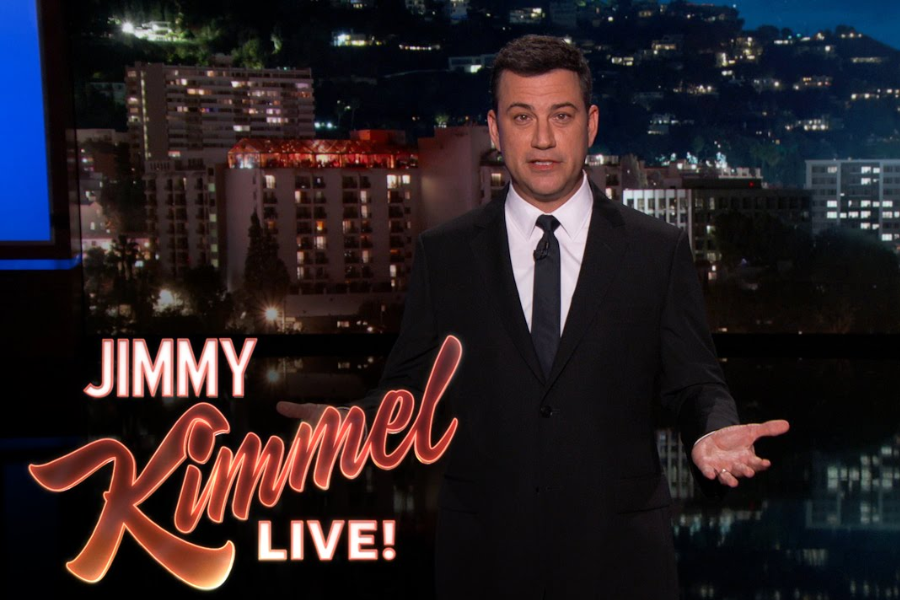
The news became so big that on live television, late night host Jimmy Kimmel—usually quick with a joke—choked up when talking about Cecil, tears welling as he called the hunt “disgusting.”
It was a rare break in comedy for a moment of raw emotion, and it hit viewers hard. His grief made the story feel deeply human.
Kimmel urged donations to conservation efforts instead of outrage alone, turning a viral tragedy into a powerful appeal for something better than blame.
The Backlash Begins

As soon as Walter Palmer’s name was linked to Cecil’s death, the internet unleashed a storm—swift, furious, and relentless. His quiet return to Minnesota didn’t last long.
Palmer’s dental practice was quickly doxxed online. Protesters gathered outside, holding signs with bloody lion imagery. He received death threats and hate mail from around the globe.
The backlash was so intense, he shut down his clinic and went into hiding. His Yelp page was flooded, his name trended worldwide, and for a time, he vanished.
The Statement and the Silence
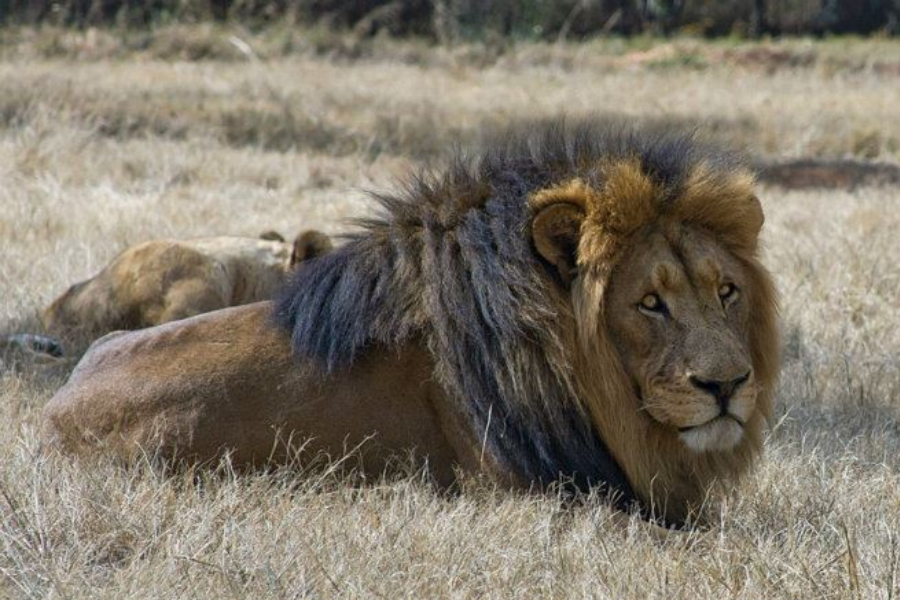
As outrage grew, Walter Palmer released a statement claiming he had relied on local experts and had no idea the lion he killed was protected.
He expressed regret but stopped short of admitting wrongdoing, insisting he believed the hunt was legal. For many, the apology felt hollow and carefully calculated.
Though the world expected accountability, the law would have the final word, and it would, leaving disappointment and Cecil’s memory to speak louder than justice.
He Got Away With It

Though Walter Palmer fired the fatal shot, he was never charged in Zimbabwe. Authorities confirmed he held a valid hunting permit and had trusted his local guides.
Zimbabwe requested Palmer’s extradition, but U.S. officials declined. They found no legal basis to pursue charges, as Palmer appeared to follow the terms of his permit.
While his name sparked global outrage, legally, he walked away untouched. The law cleared him—but public opinion made sure his reputation paid a very different price.
Justice That Never Came
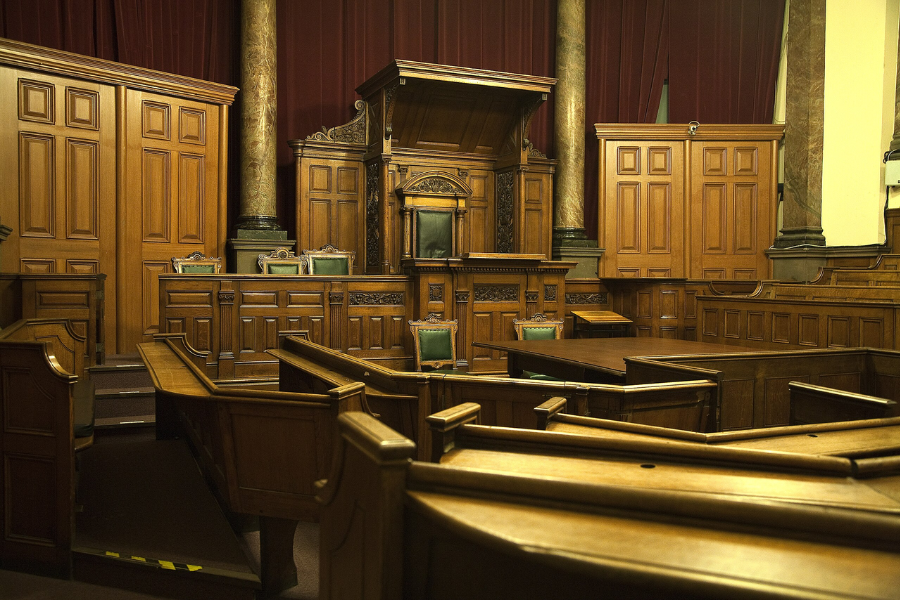
Shortly after charges against Walter Palmer were dropped, he was informed he would not be banned from visiting Zimbabwe. He could visit the country as a tourist, but he was forbidden from hunting.
Theo Bronkhorst and Honest Ndlovu, the local hunter and landowner, also avoided legal consequences. Courts ruled that, with permits in place, the hunt couldn’t be proven illegal.
In the end, no one was held accountable. But the backlash sparked lasting debate, forcing both Zimbabwe and the international community to reconsider how laws define justice for the wild.
The Lion Unknown at Home
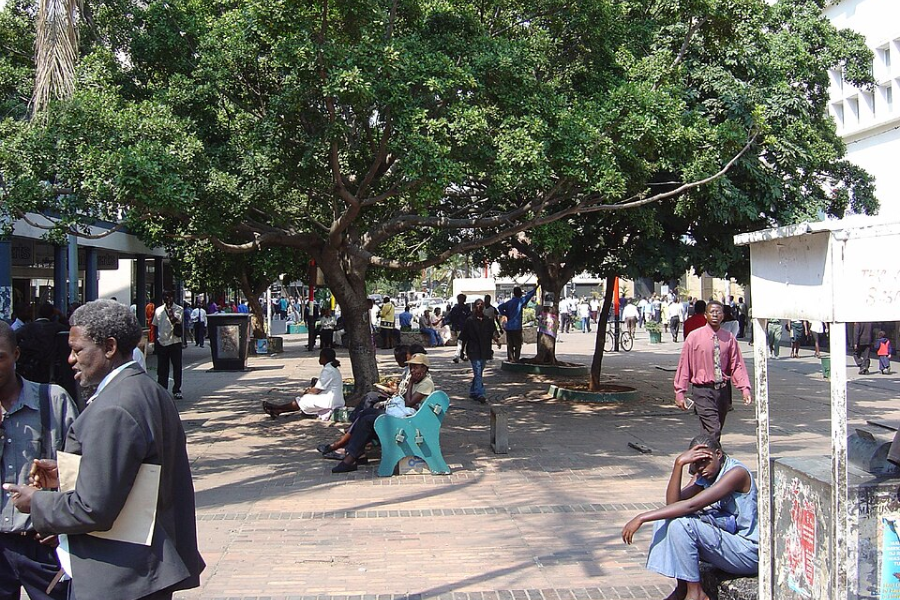
While the world wept for Cecil, in Zimbabwe his death passed mostly in silence. For many locals, he was just another lion—one they’d never heard of.
The Chronicle newspaper admitted bluntly: “99.99 percent of Zimbabweans didn’t know about this animal until Monday.” The so-called icon was a stranger in his own land.
As foreign media flooded the story with grief and outrage, the reality back home was different. For most Zimbabweans, the fame, the fury, and the lion came as news.
The Cost of Losing Cecil
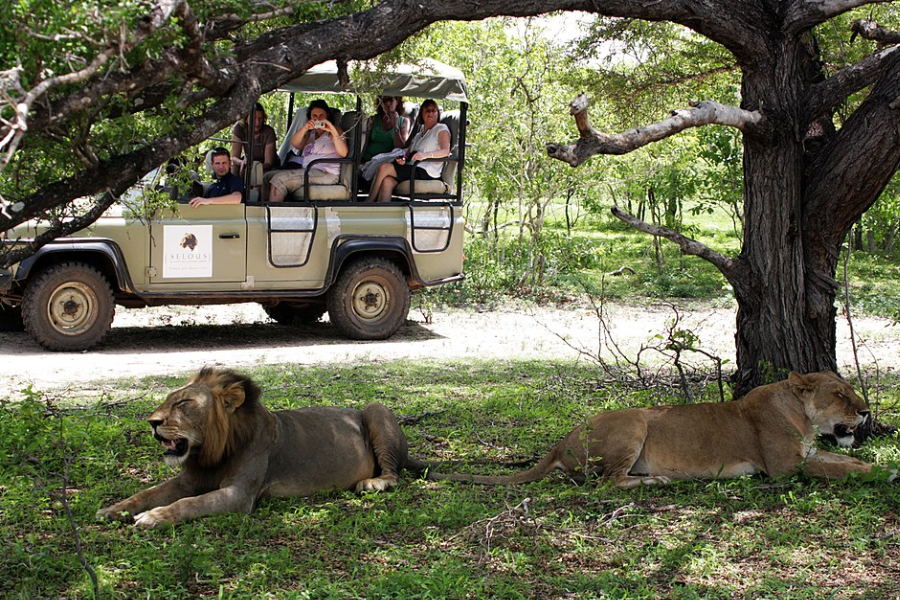
Cecil’s death didn’t just spark outrage—it hit Zimbabwe’s tourism industry hard. Officials reported a sudden drop in visitors, particularly in Hwange, where Cecil had lived.
Tourists who had once planned safaris to see him began canceling their trips. Hotel bookings fell, and local tour operators saw their livelihoods shaken overnight.
Emanuel Fundira, head of the Safari Operators Association, called the lion a “draw card” and mourned his death as “the demise of an icon” for Zimbabwean tourism.
Worth More Alive
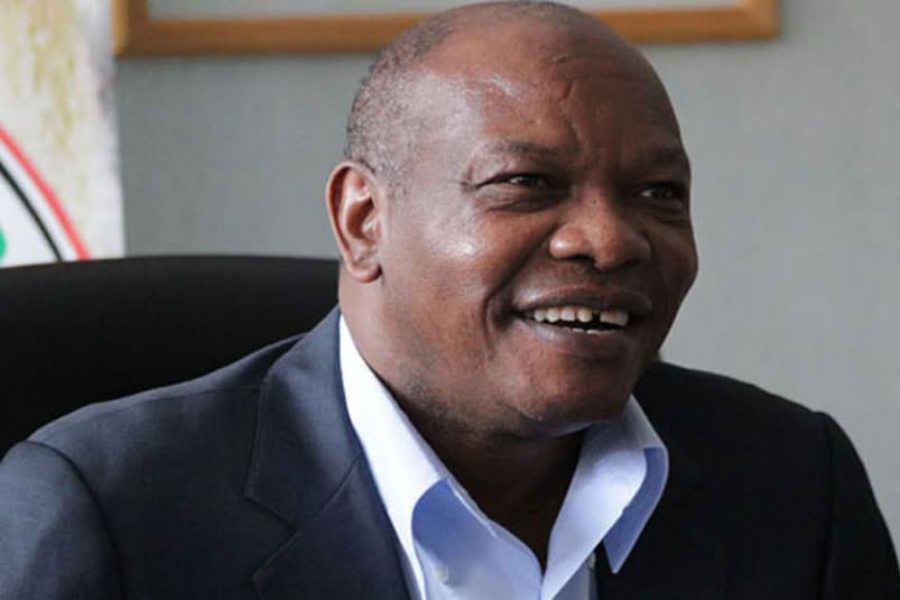
Bryan Orford, a professional guide in Hwange, did the math: Cecil, simply by being seen, was worth more than what it cost to kill him.
According to Orford, tourists at just one lodge brought in nearly $9,800 per day—meaning five days of Cecil sightings earned more than the $45,000 hunting fee.
Karikoga Kaseke of the Zimbabwe Tourism Authority added that the tragedy damaged Zimbabwe’s reputation, casting the country as indifferent to wildlife, scaring future visitors.
A Divided Outcry
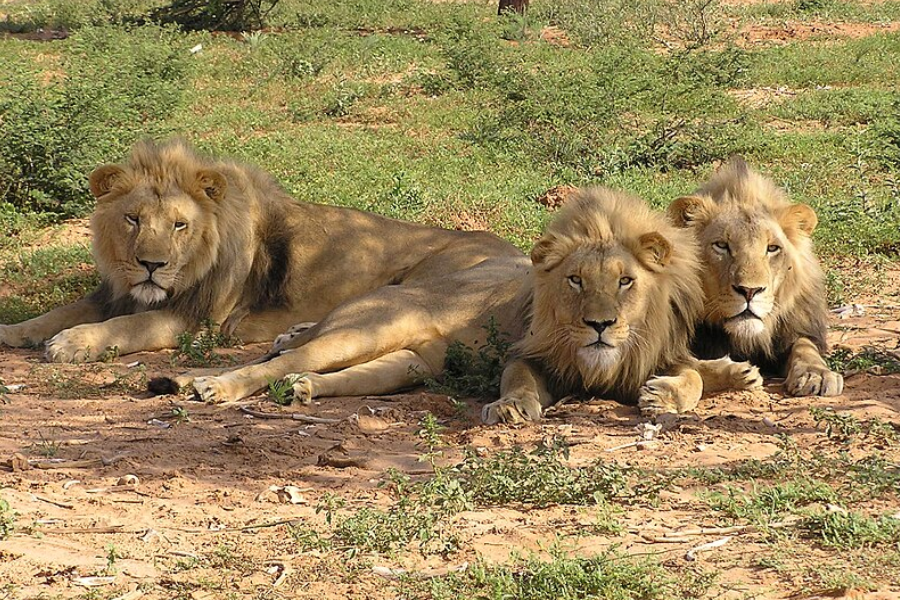
While the world mourned Cecil, many African leaders and voices offered a different perspective—questioning why one lion’s death drew more outrage than human suffering.
Jean Kapata, Zambia’s tourism minister, criticized the West’s reaction, stating bluntly: “In Africa, a human being is more important than an animal. I don’t know about the Western world.”
Others echoed the sentiment. Namibia’s environment minister warned that banning trophy hunting could damage local conservation. South Africa’s President Zuma called the incident unfortunate, but not extraordinary. Still, some measures were taken.
A Ripple, Not a Wave
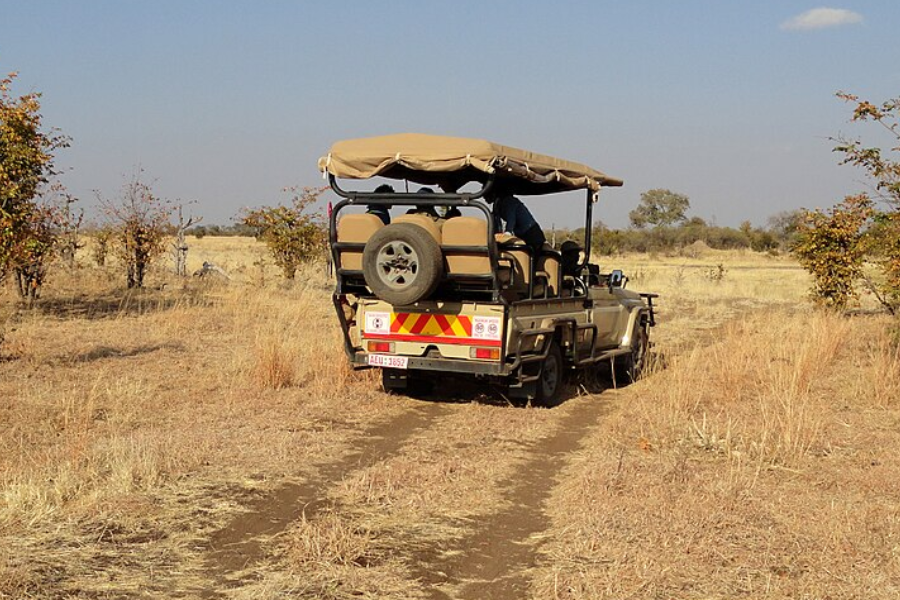
In the wake of Cecil’s death, Zimbabwe quickly rolled out new rules—banning bow hunting, suspending lion, leopard, and elephant hunts near Hwange National Park.
It was a strong response, but a short-lived one. Within months, most restrictions were lifted, permits resumed, and the hunting industry quietly returned to business as usual.
Some oversight tightened, and GPS tracking gained traction, but no sweeping reform followed. In the end, change came—but not the kind that rewrites the future.
And What About Cecil’s Pride?
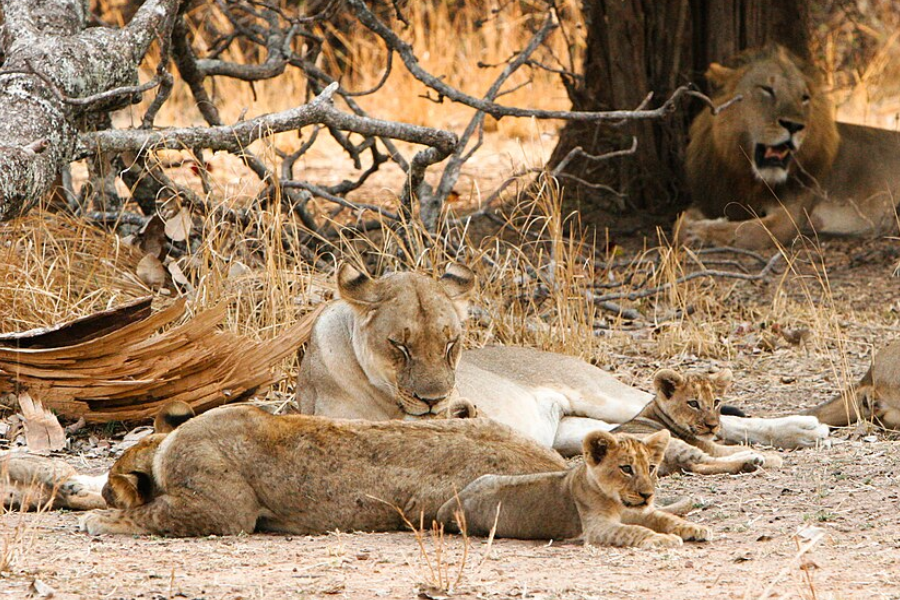
In the wild, when a dominant male lion is killed, chaos often follows. New males will frequently kill the cubs of their predecessor—a brutal tactic to establish dominance.
After Cecil’s death, conservationists feared the worst for his six cubs. Early reports suggested they were in danger of being killed by rival males moving in.
But hope came in the form of Jericho, Cecil’s coalition partner. He stepped in to lead the pride—and, against the odds, spared the cubs and kept them safe.
History Repeats Itself
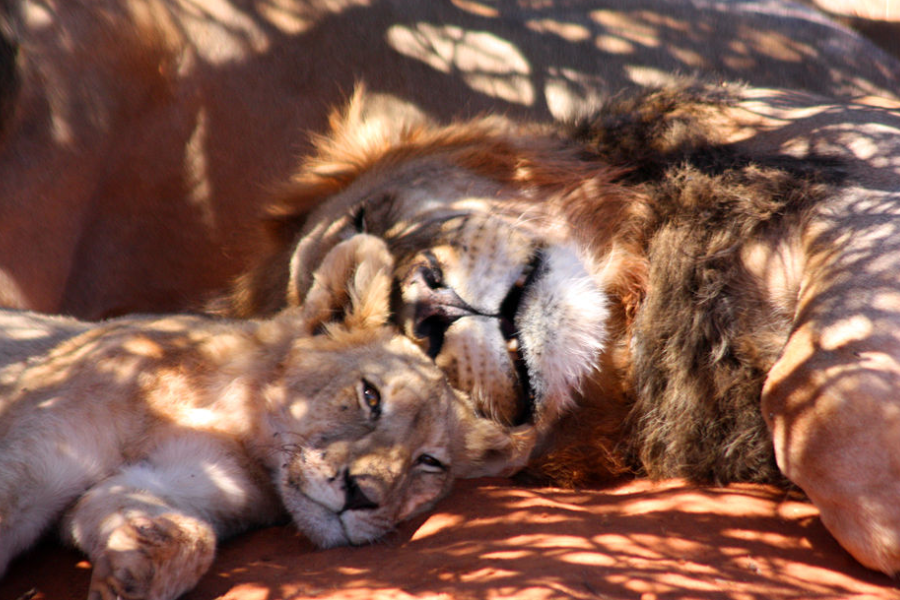
Less than two years after Cecil’s death, his son Xanda was also killed—legally—by trophy hunters on 20 July 2017, just outside Hwange National Park.
Xanda was six years old and the father of young cubs. His death, though technically within regulations, reopened wounds and reignited grief for those still mourning Cecil.
Oxford researchers called for a 5-kilometer no-hunting zone around the park. Even ethical hunting, they argued, shouldn’t come so close to tragedy—especially not twice in the same bloodline.
Grounded for Good
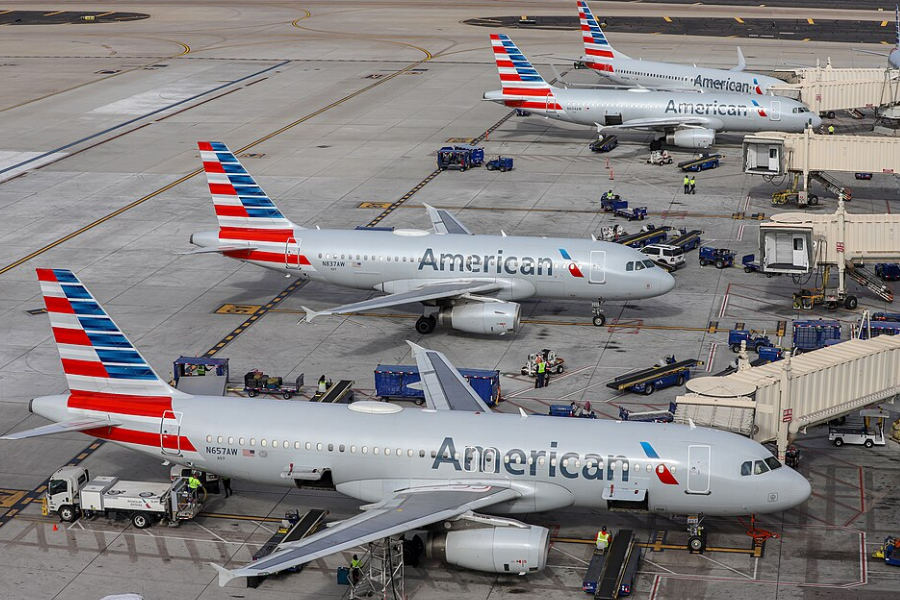
One of the most immediate ripple effects of Cecil’s death came from above—literally. Airlines around the world stepped in to halt the transport of hunting trophies.
In the months following the incident, American Airlines, Delta, and United announced they would no longer carry big-game trophies like lion heads, skins, or bones.
They weren’t alone. British Airways, Lufthansa, Air France, Emirates, Qantas, and others joined in, cutting off a key supply chain for trophy hunters, one flight at a time.
When Lawmakers Took Notice
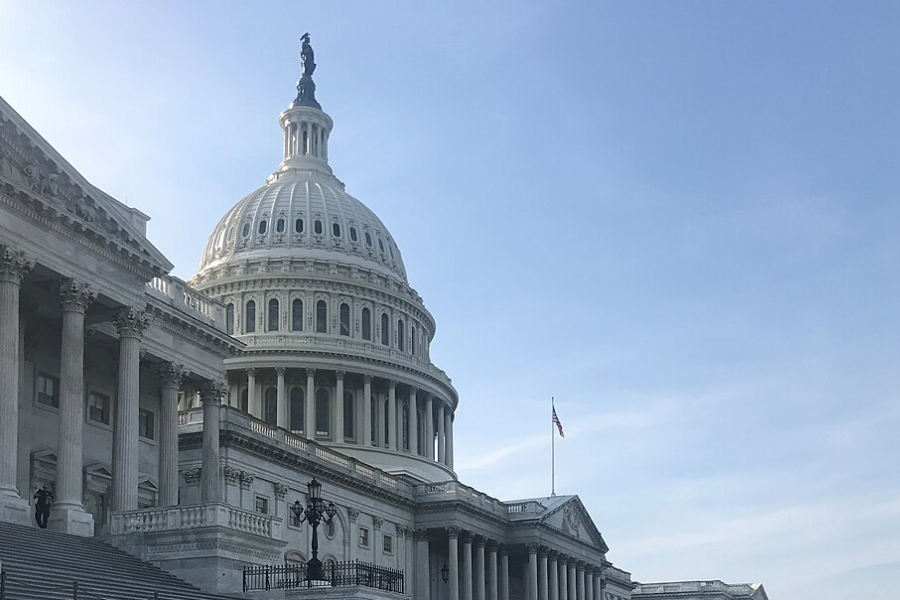
Cecil’s death didn’t just make headlines—it made it to legislative floors. In the U.S., lawmakers introduced the CECIL Act to block imports of endangered animal trophies.
The act aimed to stop hunters from bringing back lions and elephants unless they could prove the hunt benefited conservation—an ethical check against easy exploitation.
While not yet passed, the bill helped reshape public dialogue around hunting laws and put political pressure on agencies like the U.S. Fish and Wildlife Service to act.
A Ban Heard Around the World
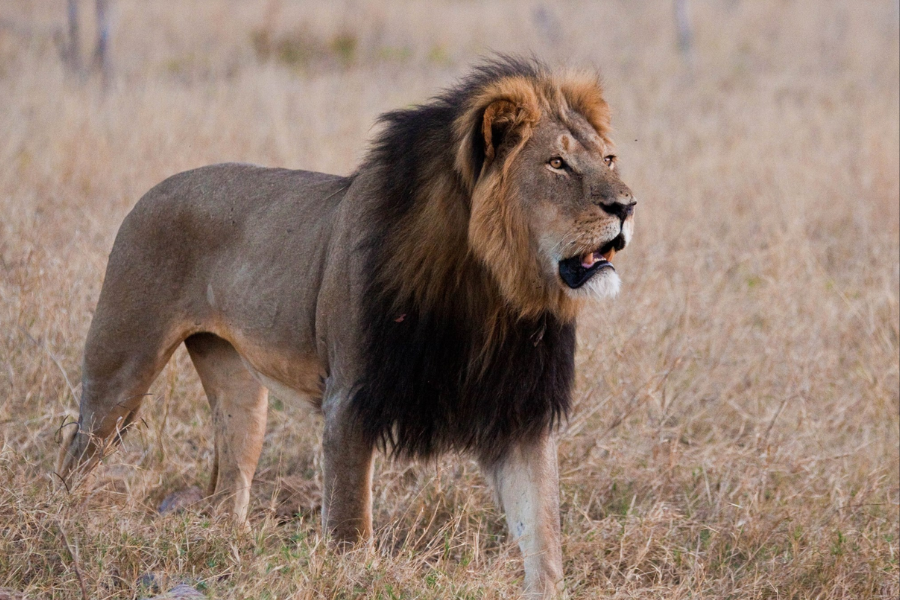
Some countries acted swiftly. Australia led the charge by becoming the first to ban the import of lion trophies, drawing a bold line after Cecil’s killing.
France soon followed, refusing permits for lion trophies and signaling a shift in Europe’s stance on the ethics of trophy hunting and wildlife protection.
These moves, though limited in scope, sent a clear message: the global community would no longer turn a blind eye to hunting practices that disregard conservation.
Business Not as Usual
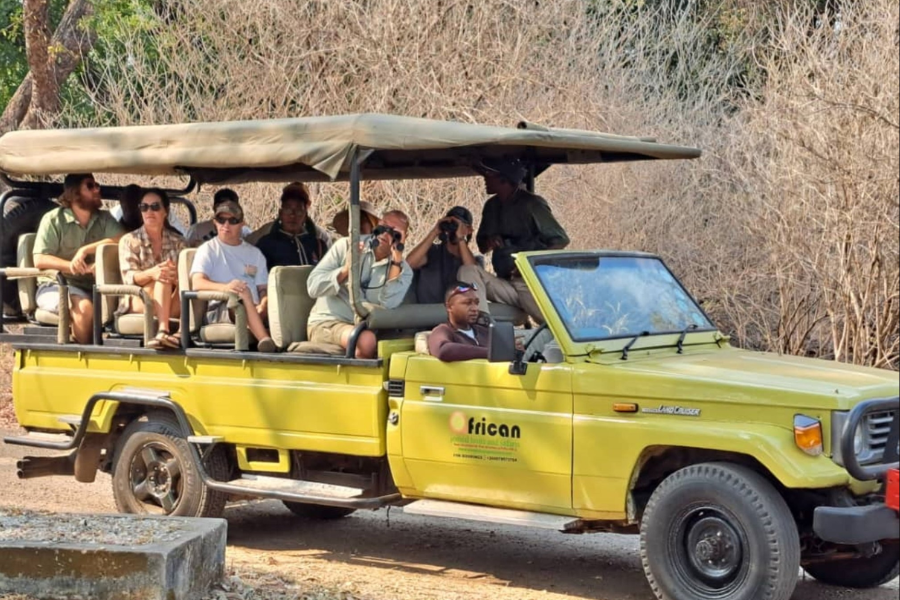
Cecil’s death didn’t just spark emotional responses—it reshaped how companies do business in the wild. Several travel agencies reevaluated their ties to trophy hunting tours.
Some tour operators cut ties entirely, choosing to stop promoting or booking hunts that targeted lions and other vulnerable species, shifting focus to ethical wildlife experiences.
Conservation groups like Panthera and the Lion Recovery Fund saw a surge in support. Donations and public interest grew, turning outrage into lasting action for lion protection.
Was There a Real Cecil Effect?
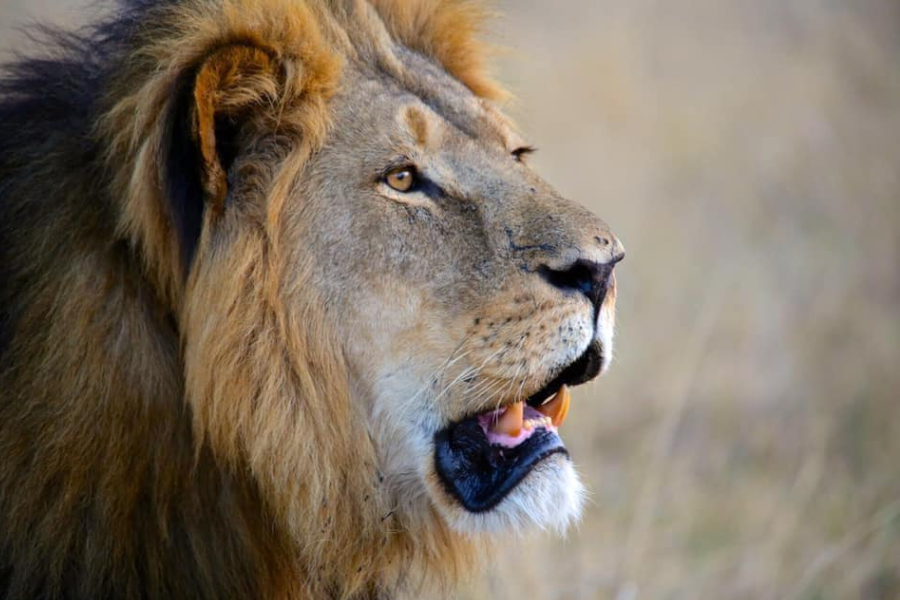
In the aftermath of Cecil’s killing, some claimed a “Cecil Effect” had taken hold—fewer hunters were traveling to Zimbabwe, and lion numbers in some regions began to rise.
Supporters say it was fear of global backlash keeping trophy hunters away. Some guides even hesitated to act in dangerous situations, worried they’d become the next headline.
Others disagreed. Conservationist Byron du Preez blamed economic recession, not ethics. In Bubye Valley, an overpopulation of lions sparked talk of culling—raising questions about what Cecil truly changed.
The Lion That Changed the Conversation
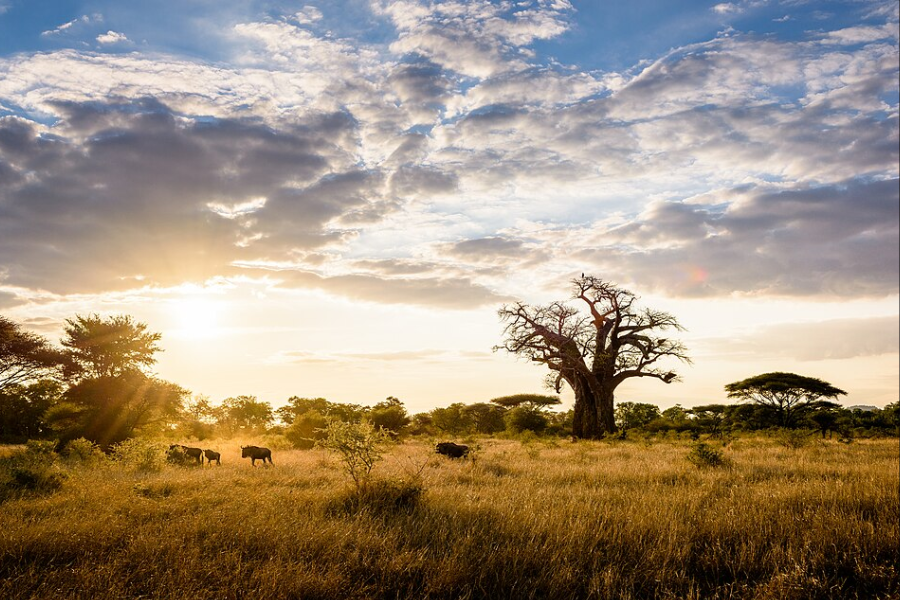
What happened to Cecil was cruel—baited from safety, wounded, and left to suffer before being killed for sport. It sparked outrage, sorrow, and a global reckoning.
Some say little changed. Laws stayed largely intact, and trophy hunting persists. But something undeniable shifted: Cecil became a symbol, and his story refused to fade.
More than a decade later, his name still stirs emotion, debate, and action. No lion lives forever, but Cecil’s legacy proved that one can still roar long after the silence.

